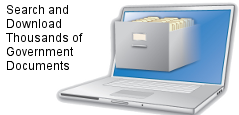FM 34-81-1, ARMY FIELD MANUAL: BATTLEFIELD WEATHER EFFECTS (23 DEC 1992)
FM 34-81-1, ARMY FIELD MANUAL: BATTLEFIELD WEATHER EFFECTS (23 DEC 1992)., This manual provides some of the more common critical weather (and
environmental) effects data and applies that information to specific operations,
systems, and personnel. Inclement weather degrades battlefield operations,
affects weapons and other systems, and plays a major role in the effectiveness of
troops in the field.
This data is intended to support the brigade and battalion S2 and staff. It is
applicable to combat, combat service, and combat service support units and is
intended for use by Active Component (AC), Reserve Components (RC), and Army
National Guard (ARNG) units in both training and combat situations.
Use of these lookup tables and data is a three-step process. For additional
information on how this is accomplished, see Appendix A. The three steps are: Using current weather observations and forecasted
conditions, you look for weather extremes. That is, those
conditions that will be too hot, too cold, too windy, too
overcast, too wet, or too humid for normal operations.
Turning to the lookup tables, you then identify specific
operations, systems, and personnel that will be impacted.
And finally, bringing any impacts and constraints you have
identified to the attention of your commander and the rest of
the staff.
The critical values presented here, together with current weather
observations or future forecasts mentioned above, will provide you with the basic
tools needed to perform these three steps. Data are presented in the form of
simple lookup tables called weather tactical decision aids (WTDAs). These WTDAs
are designed to point you toward your briefing of the commander and staff.
Appendixes B through O are tailored toward specific types of units.
This manual does not make you an expert in all facets of weather and the
total impact that inclement weather might have on an army in the field. Instead, it
allows you to quickly understand the potential impact specific current and
forecasted weather elements could have on your unit’s plans today.
Not all weather and environmental data parameters impacting Army systems
and operations are addressed. A listing of the weather and data parameters currently identified as impacting Army operations, systems, or personnel is at
Appendix O.
If you determine that a weather element may have a severe or moderate
impact on operations, systems, or personnel (friendly or threat), you alert the
commander and staff to this potential impact. This allows your commander to--
•••
Request additional information.
Modify his plans.
Continue as originally planned, but aware of potential
weather problems.
The proponent of this publication is the United States Army Intelligence
Center and Fort Huachuca (USAIC&FH). USAIC&FH is the proponent for Army
weather minus Field Artillery. Send comments and recommendations on DA Form
2028 (Recommended Changes to Publications and Blank Forms) directly to
Commander, US Army Intelligence Center and Fort Huachuca, ATTN: ATZS-TDL-D,
Huachuca, AZ 85613-6000.
This manual does not implement any International Standardization
Agreements.
FM 34-81-4
|
Simple Search
 | ||||||||
